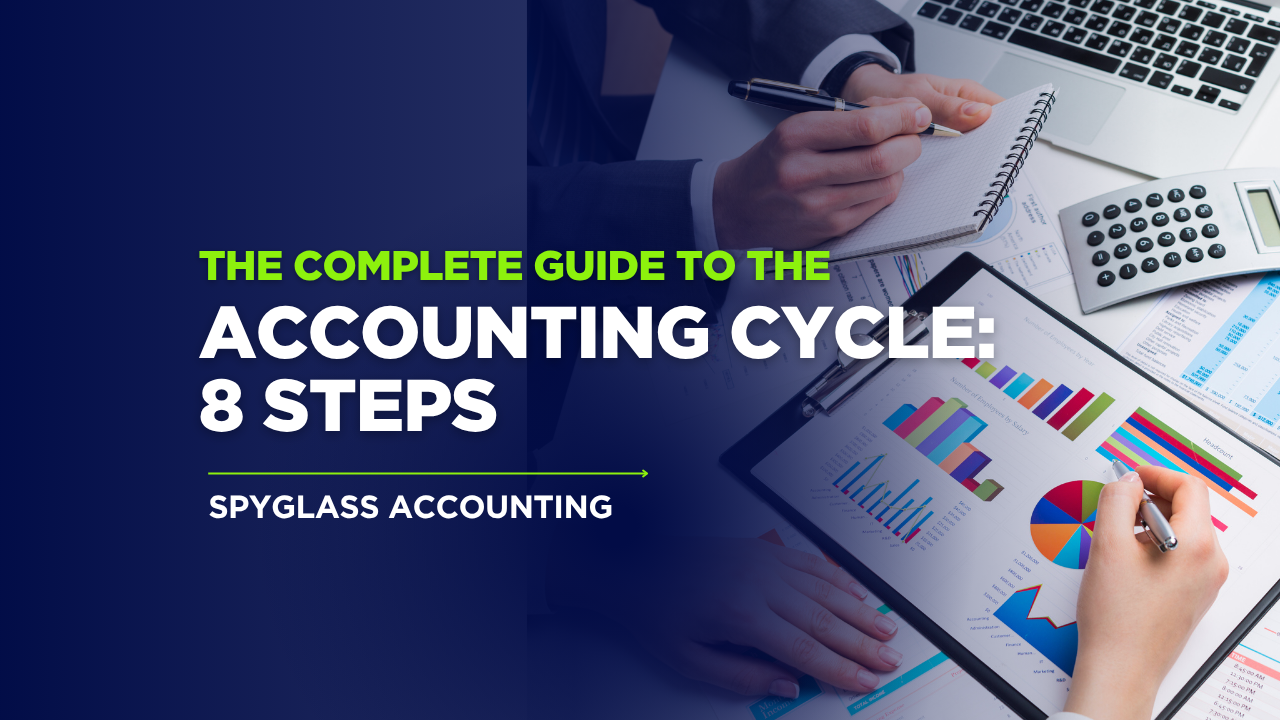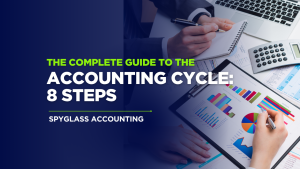
The Complete Guide to the Accounting Cycle: 8 Steps From Transactions to Financial Reports
Introduction: Why Understanding the Accounting Cycle Matters
Every business—whether a small startup or a multinational corporation—relies on accurate financial records to make informed decisions, comply with tax laws, and attract investors. At the heart of this financial tracking is the accounting cycle, a systematic process that ensures every dollar is accounted for.

In this comprehensive guide, we’ll break down:
✅ What the accounting cycle is and why it’s essential
✅ The 8 key steps in the accounting cycle
✅ How automation improves accuracy & efficiency
✅ Common challenges & best practices
Whether you’re a business owner, bookkeeper, or accounting student, this guide will help you master the accounting cycle and optimize your financial reporting.
________________________________________
What Is the Accounting Cycle?
The accounting cycle is an 8-step process that businesses use to:
- Record financial transactions
- Summarize them into financial statements
- Close the books at the end of an accounting period
This cycle repeats every month, quarter, or year, ensuring financial data is accurate, consistent, and audit-ready.
Key Benefits of the Accounting Cycle
✔ Accuracy – Minimizes errors in financial reporting
✔ Compliance – Helps meet GAAP (Generally Accepted Accounting Principles) and tax requirements
✔ Decision-Making – Provides real-time insights into business performance
✔ Efficiency – Automation reduces manual work
________________________________________

The 8 Steps of the Accounting Cycle (With Examples)
Step 1: Identify & Record Transactions
Objective: Capture all financial activities (sales, expenses, loans, etc.).
Example:
- A customer buys a $500 product on credit → Record as Accounts Receivable (AR).
- Your business pays $200 for office supplies → Record as an expense.
Best Practices:
- Use source documents (invoices, receipts, bank statements).
- Implement accounting software (QuickBooks, Xero) to automate data entry.
________________________________________
Step 2: Record Transactions in a Journal (Journal Entries)
Objective: Log transactions in chronological order using double-entry accounting (every debit has a corresponding credit).
Example:
Date Account Debit ($) Credit ($)
05/01/2025 Accounts Receivable 500
Sales Revenue 500
Best Practices:
- Use subsidiary journals (Sales Journal, Cash Disbursements Journal).
- Automate recurring entries (e.g., monthly rent).
________________________________________
Step 3: Post to the General Ledger (GL)
Objective: Transfer journal entries to the general ledger, where transactions are categorized by account (Cash, AR, AP, etc.).
Example:
Account Debit ($) Credit ($) Balance ($)
Accounts Receivable 500 500
Sales Revenue 500 (500)
Best Practices:
- Reconcile GL accounts monthly.
- Use cloud accounting software for real-time updates.
________________________________________
Step 4: Prepare an Unadjusted Trial Balance
Objective: Ensure total debits = total credits before adjustments.
Example Trial Balance:
Account Debit ($) Credit ($)
Cash 10,000
Accounts Receivable 5,000
Accounts Payable 3,000
Sales Revenue 12,000
Total 15,000 15,000
Best Practices:
- Investigate imbalances immediately.
- Use accounting dashboards for quick checks.
________________________________________
Step 5: Analyze Worksheets & Identify Adjustments
Objective: Find discrepancies and prep adjusting entries.
Common Adjustments:
- Accruals (unrecorded expenses/revenue)
- Depreciation (allocating asset costs)
- Prepaid expenses (e.g., insurance)
Example Adjustment:
- $1,200 annual insurance → $100/month expense.
________________________________________
Step 6: Make Adjusting Journal Entries
Objective: Correct errors and reflect accrual accounting principles.
Example:
Date Account Debit ($) Credit ($)
05/31/2025 Insurance Expense100 Prepaid Insurance100
Best Practices:
- Document all adjustments for audits.
- Automate reversing entries (e.g., accrued wages).
________________________________________
Step 7: Prepare Financial Statements
Objective: Generate 3 key reports:
- Income Statement (Profit & Loss)
- Balance Sheet (Assets, Liabilities, Equity)
- Cash Flow Statement
Example Income Statement:
Revenue $50,000
COGS ($20,000)
Gross Profit $30,000
Expenses ($15,000)
Net Income $15,000
Best Practices:
- Compare quarterly trends.
- Use visual dashboards (e.g., Power BI).
________________________________________
Step 8: Close the Books
Objective: Reset temporary accounts (Revenue, Expenses) for the next period.
Process:
- Transfer net income to Retained Earnings.
- Zero out revenue/expense accounts.
Best Practices:
- Run a post-closing trial balance.
- Automate month-end close workflows.
________________________________________

How Automation Transforms the Accounting Cycle
Modern accounting software (e.g., QuickBooks, NetSuite, Sage) eliminates manual errors by:
✔ Auto-recording transactions (bank feeds, OCR for invoices)
✔ Generating real-time financial statements
✔ Flagging discrepancies (AI-powered anomaly detection)
Case Study:
A mid-sized firm reduced month-end close time by 40% after automating reconciliations.
________________________________________
Common Challenges & Solutions
Challenge Solution
Unrecorded transactions Use bank feed automation
Imbalanced trial balance Reconcile weekly
Late financial reports Implement cloud accounting
________________________________________
Key Takeaways
- The accounting cycle ensures accurate, compliant financial records.
- Automation reduces errors and speeds up reporting.
- Monthly reconciliations prevent year-end headaches.
________________________________________
Need Help Optimizing Your Accounting Cycle?
At Spyglass Accounting & Financial Services, we help businesses:
✔ Streamline bookkeeping with cloud accounting
✔ Automate financial reporting
✔ Ensure tax compliance